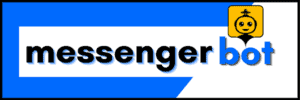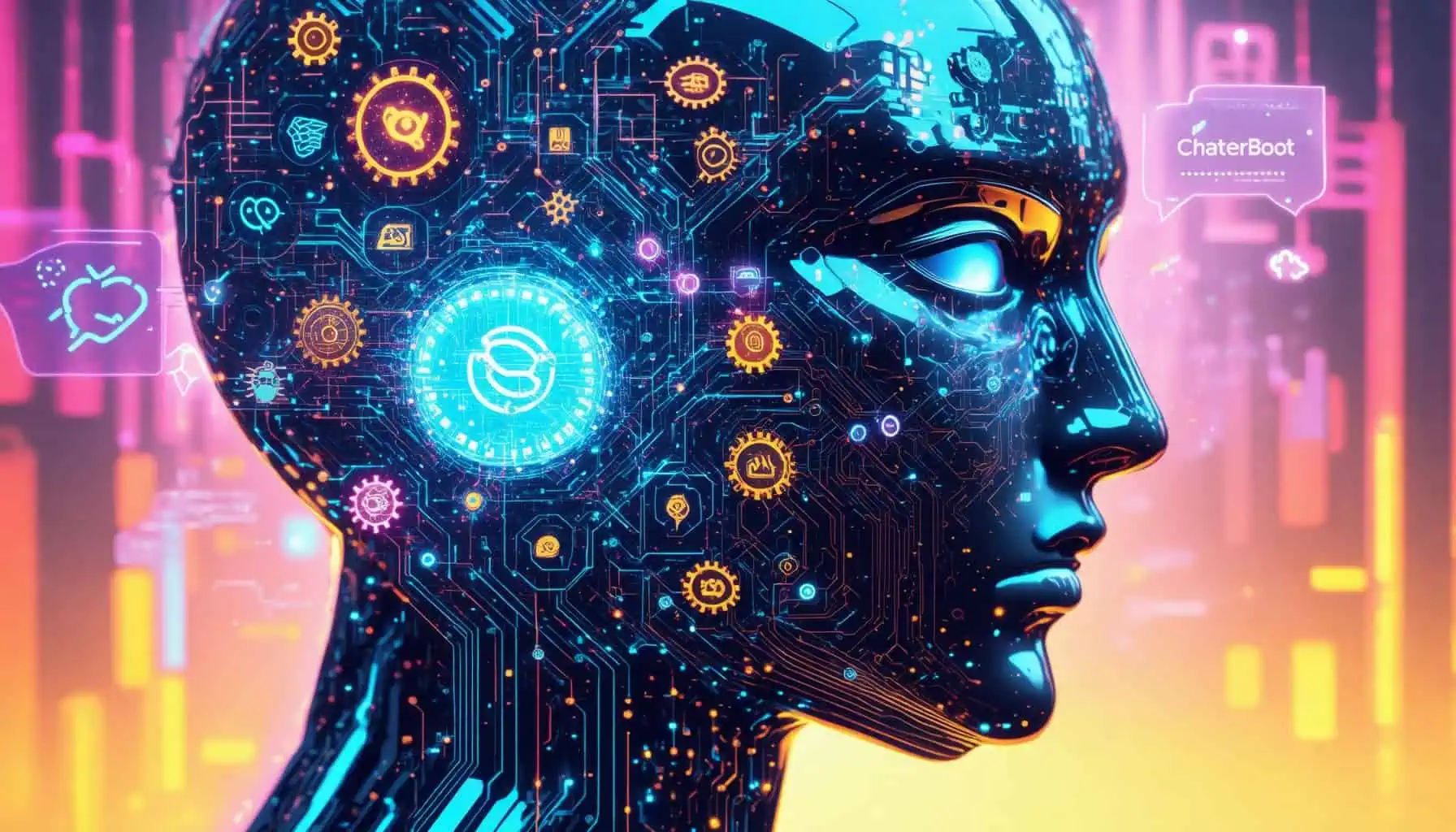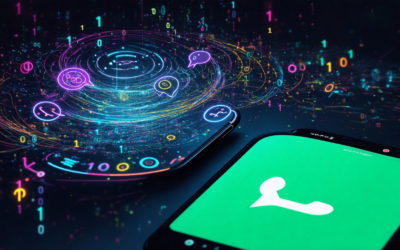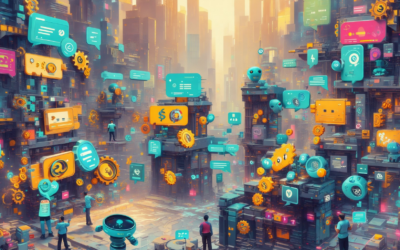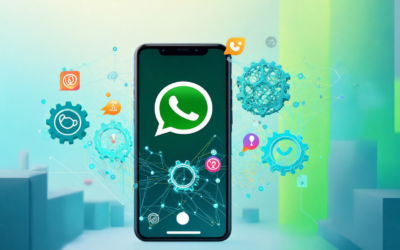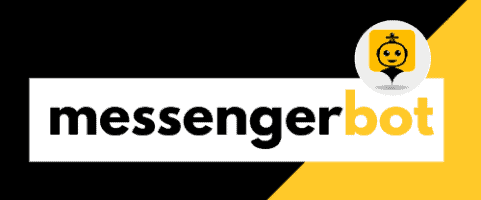Key Takeaways
- ChatterBot AI is a versatile AI chatbot framework that utilizes natural language processing (NLP) for engaging conversations.
- Its machine learning capabilities enable continuous improvement of responses, making it ideal for businesses seeking to enhance customer interaction.
- ChatterBot is open-source, allowing users to customize and integrate it easily across various platforms, enhancing its adaptability.
- Although ChatterBot offers valuable features, it has not been actively maintained, prompting users to explore alternatives like Rasa and Dialogflow for more robust solutions.
- The community support on platforms like GitHub provides valuable resources, although critical applications may require more stable options.
- Implementing ChatterBot can lead to significant cost savings, 24/7 availability, and enhanced user engagement, making it a strong contender in the chatbot AI landscape.
Welcome to our comprehensive exploration of ChatterBot AI, a powerful tool in the realm of artificial intelligence chat that has garnered attention for its versatility and ease of use. In this article, we will delve into the core functionalities of ChatterBot AI, examining its capabilities and how it stands in comparison to other leading AI chatbots, including the popular ChatGPT. We will also discuss the current status of ChatterBot’s development, its applications across various industries, and the benefits it offers to businesses and developers alike. Additionally, we will provide a step-by-step guide on how to install ChatterBot, explore its free and open-source features, and analyze user feedback to help you determine if this is the right solution for your needs. Join us as we navigate the exciting world of AI chat online and uncover the potential of ChatterBot AI in enhancing communication through bot chats.
Is ChatterBot AI?
ChatterBot is an advanced AI chatbot framework designed for creating conversational agents that can engage users in natural language. It utilizes machine learning algorithms to improve its responses over time, making it suitable for both individuals and businesses looking to enhance customer interaction and automate communication processes.
Overview of ChatterBot AI and its capabilities
ChatterBot stands out in the realm of artificial intelligence chat solutions due to its robust features and adaptability. Here are some key features of ChatterBot:
- Natural Language Processing (NLP): ChatterBot employs NLP techniques to understand and generate human-like responses, allowing for seamless conversations.
- Machine Learning: The framework learns from previous interactions, continuously improving its ability to provide relevant and accurate answers.
- Customizability: Users can train ChatterBot with specific datasets, tailoring its responses to meet unique business needs or personal preferences.
- Integration Capabilities: ChatterBot can be integrated with various platforms, enhancing its usability across different channels, including websites and messaging applications.
- Open Source: Being an open-source project, ChatterBot allows developers to modify and enhance the code, fostering a community of innovation and support.
For businesses, implementing ChatterBot can lead to improved customer service efficiency, reduced response times, and enhanced user engagement. According to a report by Gartner, by 2025, 75% of customer service interactions will be powered by AI, highlighting the growing importance of chatbots like ChatterBot in modern business strategies.
Comparison with other AI chatbots
When comparing ChatterBot to other AI chatbots, it is essential to consider factors such as functionality, ease of use, and integration capabilities. While many chatbots focus on specific tasks, ChatterBot’s versatility allows it to adapt to various applications, from customer service to personal assistants. Competitors like Brain Pod AI offer unique features, including multilingual support and advanced analytics, which can complement ChatterBot’s capabilities.
Ultimately, the choice between ChatterBot and other AI chat solutions depends on the specific needs of the user or business. For those seeking a customizable and open-source option, ChatterBot remains a top contender in the chatbot AI landscape.
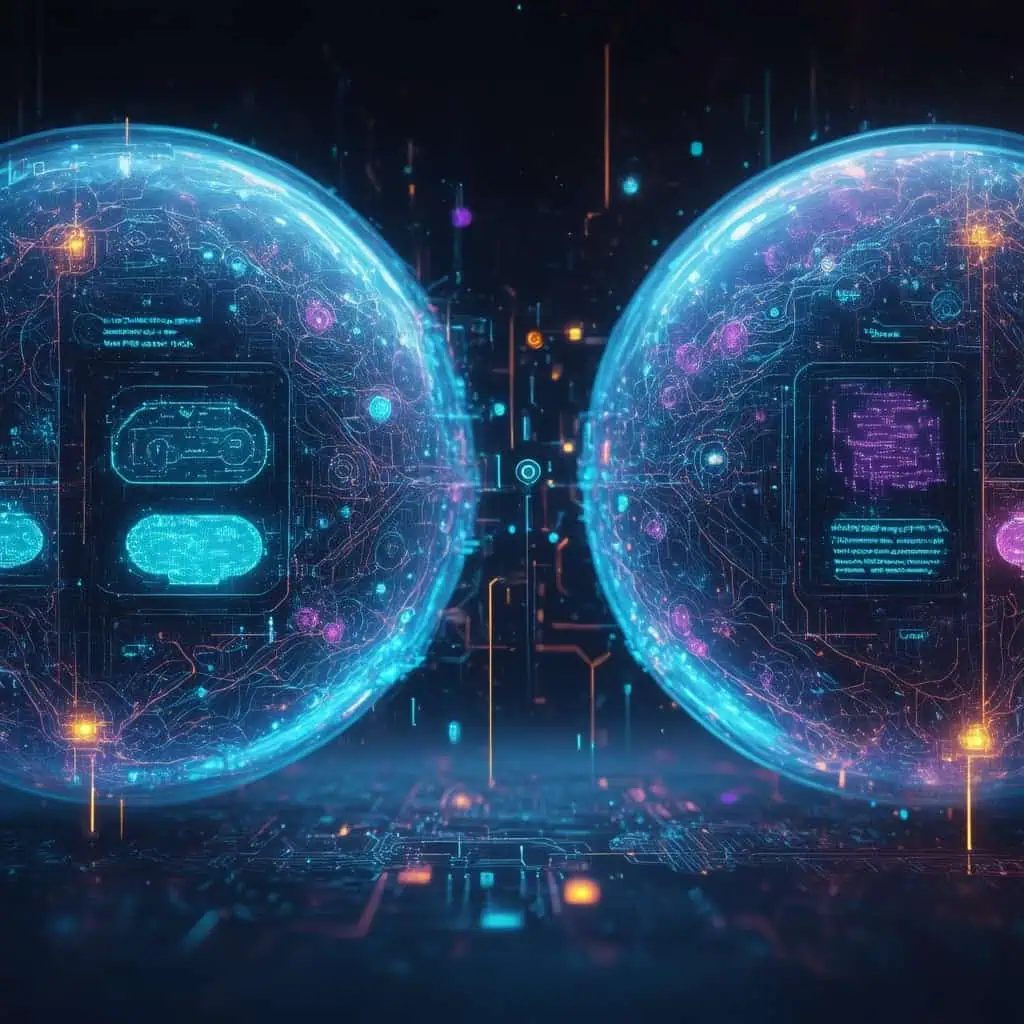
Is ChatterBot Still Maintained?
ChatterBot is an open-source Python library designed for creating chatbots using machine learning. While it gained popularity for its ease of use and flexibility, it is important to note that ChatterBot has not been actively maintained for some time. As a result, users have reported numerous unresolved issues, which can hinder its functionality and integration with newer technologies.
Recent discussions in the developer community indicate that while ChatterBot remains a viable option for educational purposes and small projects, developers seeking robust and reliable chatbot solutions may want to consider alternatives. For instance, platforms like Rasa and Dialogflow offer more comprehensive support and active development, making them suitable for production-level applications.
For those interested in building chatbots, it is crucial to stay updated on the latest trends in natural language processing (NLP) and machine learning. Engaging with active communities on platforms like GitHub or Stack Overflow can provide insights into the most current tools and libraries available.
In summary, while ChatterBot is still available for use, its lack of maintenance may pose challenges for developers. Exploring other options like Rasa or Dialogflow could provide more reliable and feature-rich alternatives for chatbot development.
Community Support and Contributions on GitHub
The community surrounding ChatterBot has played a significant role in its development, even in the absence of active maintenance. Many users contribute to the project on GitHub, sharing their experiences, troubleshooting issues, and proposing enhancements. This collaborative effort allows developers to access a wealth of knowledge and resources, making it easier to implement ChatterBot in various projects.
However, potential users should be aware that relying solely on community support may not be sufficient for critical applications. For businesses looking for a more stable and supported solution, considering alternatives like Brain Pod AI or other AI chatbots may be advisable. These platforms often provide dedicated support, regular updates, and a more extensive feature set, ensuring a smoother user experience.
What is a ChatterBot used for?
A ChatterBot, commonly referred to as a chatbot, is an advanced computer program designed to simulate human-like conversations with users. These digital assistants leverage artificial intelligence (AI) technologies, particularly natural language processing (NLP), to interpret user inquiries and generate relevant responses. The applications of ChatterBot AI span various industries, providing significant benefits to businesses and developers alike.
Applications of ChatterBot in Various Industries
- Customer Support: ChatterBots are widely employed in customer service to provide instant responses to frequently asked questions, troubleshoot issues, and guide users through processes, significantly enhancing user experience and reducing wait times.
- E-commerce Assistance: In online retail, ChatterBots assist customers in finding products, providing recommendations, and facilitating transactions, thereby streamlining the shopping experience.
- Personal Assistants: Many ChatterBots function as personal assistants, helping users manage schedules, set reminders, and provide information on various topics, making daily tasks more efficient.
- Education and Training: ChatterBots are increasingly used in educational settings to provide tutoring, answer student queries, and facilitate interactive learning experiences.
- Entertainment: Some ChatterBots are designed for entertainment purposes, engaging users in games or storytelling, showcasing the versatility of conversational AI.
Benefits of Using ChatterBot for Businesses and Developers
Utilizing ChatterBot AI offers numerous advantages for businesses and developers:
- Cost Efficiency: By automating responses and tasks, ChatterBots reduce the need for extensive customer service teams, leading to significant cost savings.
- 24/7 Availability: ChatterBots provide round-the-clock support, ensuring that users can receive assistance at any time, enhancing customer satisfaction.
- Scalability: As businesses grow, ChatterBots can easily scale to handle increased user interactions without compromising service quality.
- Data Collection: ChatterBots can gather valuable data on user preferences and behaviors, enabling businesses to tailor their offerings and improve marketing strategies.
- Enhanced User Engagement: With their ability to provide personalized interactions, ChatterBots foster deeper connections with users, leading to increased loyalty and retention.
What is ChatGPT AI?
ChatGPT AI represents a significant advancement in the realm of artificial intelligence chat technologies. This model, developed by OpenAI, leverages sophisticated natural language processing (NLP) techniques to understand and generate human-like text. With its ability to engage in meaningful conversations, ChatGPT has become a popular choice for various applications, from customer support to content creation.
ChatGPT AI Overview
- Natural Language Understanding: ChatGPT utilizes advanced NLP techniques to comprehend and respond to human language effectively, making it user-friendly for a wide range of applications.
- Generative AI: This AI model is capable of generating diverse text formats, including articles, poems, emails, and code snippets, tailored to user prompts, showcasing its versatility in content creation.
- Conversational AI: Designed for interactive dialogue, ChatGPT facilitates seamless back-and-forth conversations, enhancing user engagement and providing a more personalized experience.
- Versatile Applications: ChatGPT serves multiple purposes, such as answering questions, composing creative texts, assisting with coding tasks, and even providing customer support, demonstrating its adaptability across various domains.
- Access Options: Currently available for free as part of a research preview, OpenAI also offers a subscription service (ChatGPT Plus) that provides users with enhanced features and priority access to updates.
- Large Language Model (LLM): ChatGPT is built on the GPT-4 architecture, a large language model trained on extensive datasets, which enables it to generate coherent and contextually relevant responses.
- Transformer Architecture: The underlying transformer architecture of GPT-4 allows for efficient text processing and generation, significantly improving the model’s performance in understanding complex language patterns.
- Reinforcement Learning from Human Feedback (RLHF): ChatGPT’s training incorporates RLHF, where human trainers evaluate and refine the model’s outputs, ensuring higher accuracy and relevance in responses.
- Bias and Limitations: Like all AI models, ChatGPT may reflect biases inherent in its training data. Users should be aware of these limitations and critically evaluate the information provided.
- Ethical Considerations: The deployment of ChatGPT raises ethical questions regarding its use in education, professional settings, and other areas, necessitating ongoing discussions about responsible AI usage.
Differences between ChatGPT and Traditional Chatbots
When comparing ChatGPT to traditional chatbots, several key differences emerge:
- Complexity of Responses: Traditional chatbots often rely on predefined scripts and keywords, limiting their ability to handle unexpected queries. In contrast, ChatGPT can generate nuanced responses based on context, making conversations feel more natural.
- Learning Capabilities: While traditional chatbots may require manual updates to improve their performance, ChatGPT continuously learns from interactions, enhancing its ability to provide relevant answers over time.
- Application Versatility: ChatGPT’s generative capabilities allow it to be used in a wider array of applications, from creative writing to technical support, whereas traditional chatbots are typically confined to specific tasks.
- User Engagement: The conversational nature of ChatGPT fosters deeper engagement with users, as it can maintain context and follow up on previous interactions, unlike many traditional chatbots that may struggle with continuity.
For those interested in exploring AI chat technologies further, consider looking into Brain Pod AI, which offers a range of AI solutions, including chat assistants and content generation tools.

Which AI is better than ChatGPT?
When evaluating which AI is better than ChatGPT, it’s essential to consider various factors such as functionality, user preferences, and performance metrics. While ChatGPT is a leading AI chatbot, several alternatives offer unique features that may cater to specific needs.
Comparative analysis of ChatGPT and other AI chatbots
1. **Google Gemini**: This AI excels for users deeply embedded in the Google ecosystem, providing seamless integration with tools like Google Docs and Sheets, enhancing productivity and collaboration.
2. **Claude**: Known for its ethical approach, Claude prioritizes accuracy and reliability, making it a preferred choice for users who require nuanced and safe responses in their artificial intelligence chat.
3. **Microsoft Copilot**: Ideal for users within the Microsoft suite, Copilot enhances content creation and data analysis by integrating AI capabilities directly into applications like Word and Excel.
4. **Perplexity AI**: This AI is particularly effective for fact-based research, offering real-time web access and citations, which is beneficial for users needing accurate and up-to-date information.
5. **Meta AI**: Tailored for social media, Meta AI enhances user engagement through conversational AI, making it a strong contender for businesses focused on social interactions.
6. **Character.AI**: Unique for its role-play capabilities, this AI allows users to create and interact with AI characters, providing an engaging and entertaining conversational experience.
7. **Messenger Bot**: While not a direct competitor, Messenger Bot offers automated responses and customer service functionalities within messaging platforms, making it a valuable tool for businesses looking to enhance user interaction.
User preferences and performance metrics
User preferences often dictate the choice of AI chatbot. Factors such as ease of use, integration capabilities, and specific functionalities play a significant role. For instance, businesses may prefer AI chatbots that offer multilingual support or advanced analytics for better customer insights. Performance metrics, including response accuracy and user satisfaction, are crucial in determining the effectiveness of each AI solution.
Ultimately, the best AI for a user depends on their specific needs and the context in which they operate. For a more detailed comparison of these AI tools, check out resources like this advanced chatbot comparison.
How do I install ChatterBot?
Installing ChatterBot is a straightforward process that allows you to leverage this powerful AI chatbot framework for your projects. Follow these steps to ensure a successful setup for building chatbots in Python:
- Check Python Version: Ensure you have Python 3.4 or later installed on your system. You can verify your Python version by running
python --versionin your command line. - Install ChatterBot: Open your command line interface (CLI) and execute the following command to install ChatterBot:
pip install chatterbot
- Install Optional Dependencies: For enhanced functionality, particularly for natural language processing, install the optional dependencies by running:
pip install chatterbot_corpus nltk
- Verify Installation: To confirm that ChatterBot has been installed correctly, open a Python script or an interactive Python shell and try importing ChatterBot with the following command:
from chatterbot import ChatBot
- Set Up Your ChatBot: After successful installation, you can create and configure your chatbot. Here’s a basic example:
chatbot = ChatBot('MyBot') - Explore Further: For more advanced features, consider integrating ChatterBot with platforms like Messenger Bot to enhance user interaction. This can be achieved by utilizing web frameworks such as Flask or Django to connect your ChatterBot to messaging platforms.
Installation Requirements and Troubleshooting Tips
Before you begin the installation, ensure your system meets the following requirements:
- Python 3.4 or later: ChatterBot requires a compatible version of Python. If you need to install or upgrade Python, visit the official Python website.
- Internet Connection: A stable internet connection is necessary to download ChatterBot and its dependencies.
- IDE or Text Editor: Use an Integrated Development Environment (IDE) or text editor like PyCharm, VSCode, or Jupyter Notebook for coding.
If you encounter issues during installation, refer to the official ChatterBot documentation for troubleshooting tips and community support. Engaging with forums on platforms like GitHub can also provide valuable insights and solutions from other developers.
ChatterBot AI Free and Open Source
ChatterBot AI is a powerful tool in the realm of artificial intelligence chat, providing users with a free and open-source platform to create conversational agents. This accessibility allows developers and businesses to leverage AI chatbot technology without incurring significant costs. The open-source nature of ChatterBot AI encourages collaboration and innovation, making it a popular choice among developers looking to build customized solutions.
Exploring the Free Features of ChatterBot AI
ChatterBot AI offers a variety of free features that enhance its usability for both beginners and experienced developers. Key features include:
- Customizable Training: Users can train their AI chatbot with specific datasets, allowing for tailored interactions that meet unique business needs.
- Multi-language Support: ChatterBot AI supports multiple languages, enabling businesses to engage with a diverse audience through AI chat online.
- Integration Capabilities: The platform can be easily integrated into various applications, making it suitable for different environments, including websites and mobile apps.
- Community Contributions: Being open-source, ChatterBot AI benefits from contributions by developers worldwide, enhancing its features and capabilities over time.
These features make ChatterBot AI an attractive option for those seeking a free AI chatbot solution that can be adapted to various use cases.
Benefits of Using ChatterBot AI GitHub Resources
Utilizing ChatterBot AI’s resources on GitHub provides several advantages:
- Access to Documentation: Comprehensive documentation is available, guiding users through installation, configuration, and customization processes.
- Community Support: Users can engage with a community of developers, sharing insights, troubleshooting issues, and collaborating on projects.
- Regular Updates: The GitHub repository is frequently updated, ensuring users have access to the latest features and improvements.
- Example Projects: The repository includes example projects that demonstrate how to implement various functionalities, helping users to get started quickly.
By leveraging these resources, developers can maximize the potential of their ChatterBot AI implementations, creating effective chatbot AI solutions that meet their specific requirements.
